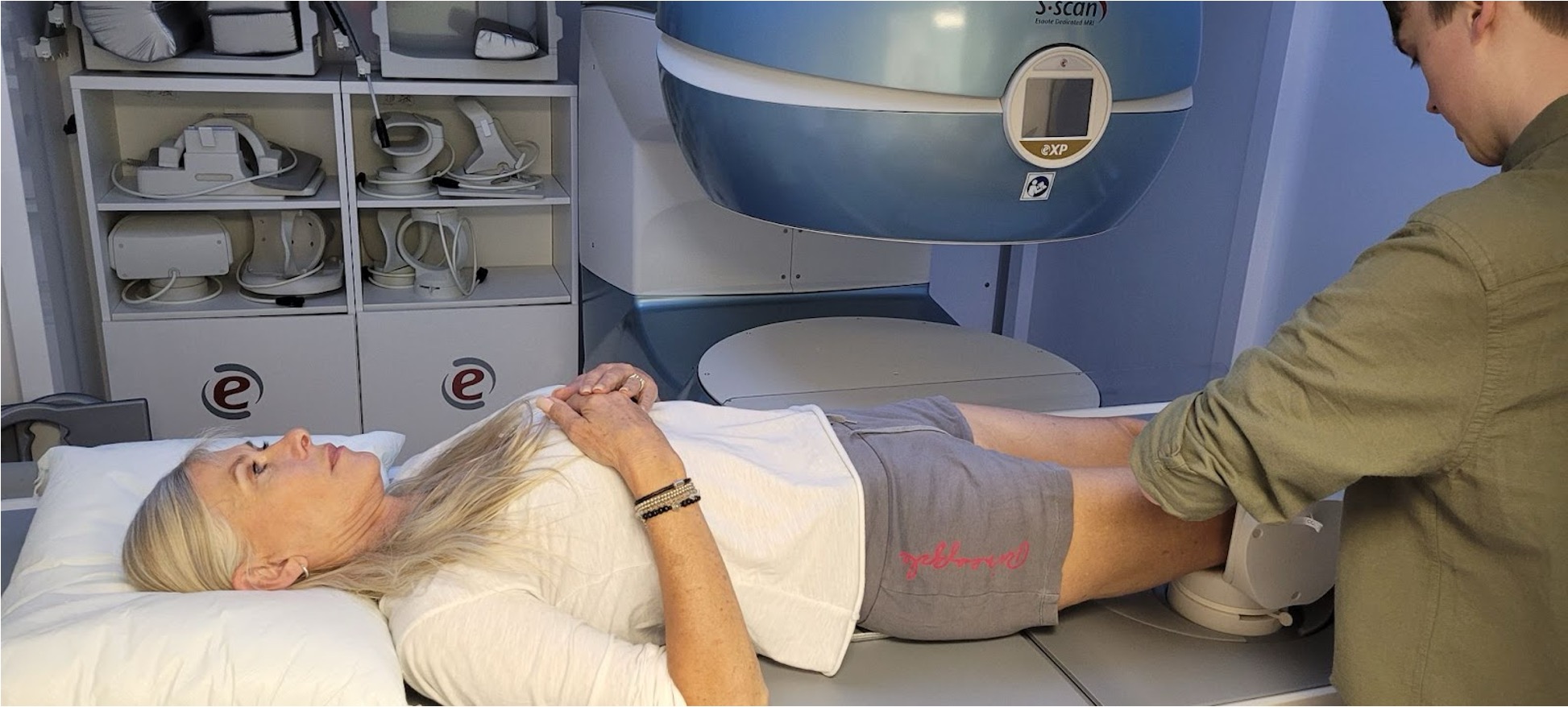Thigh Pain: Symptoms, Causes, Treatment & Exercises
:format(webp)/cdn.mskdoctors.com/storage/2025/3/riOfK1tgUnQl4nrlPafZIRChWr6g0jgK.jpg)
Key Takeaways
-
Thigh pain can affect your daily life, causing sharp, dull or burning feelings that make movement difficult.
-
Many things can cause thigh pain, including pulled muscles, nerve problems, joint issues and lifestyle factors.
-
Tests like MRIs, scans and physical exams help find out exactly what's causing your pain.
-
Treatment often combines medicine, physical therapy and targeted exercises to help reduce pain.
-
MSK Doctors offer personalised care to help manage your thigh pain and improve your long-term health.
What is Thigh Pain?
Thigh pain can range from mild to severe and can really affect how you move and feel day-to-day. It can happen for many different reasons, from muscle injuries to nerve problems.
Thigh pain can feel different for everyone. It can be a sharp, shooting pain that comes on suddenly, a dull, constant ache that persists throughout the day - or a burning feeling that radiates across the area.
The pain can affect your inner thigh, outer thigh, or upper thigh areas. You may also notice other symptoms like numbness, tingling, muscle weakness, or swelling.
All this can make simple activities like walking, using stairs or even sitting uncomfortable.
|
What Causes Thigh Pain?
Muscle Problems
Thigh pain often comes from pulled muscles, which can happen suddenly during sports, exercise, or even everyday activities.
Another possibility is overuse. These injuries develop slowly from repeated movements that stress your muscles, like cycling, running, or certain work tasks.
Nerve Issues
Various nerve issues can also lead to thigh pain - for example, sciatica can cause pain that travels from your lower back through your thigh.
Meralgia paresthetica affects the outer thigh, creating burning or tingling feelings, while diabetic neuropathy gradually affects nerve function, causing ongoing discomfort.
Joint and Other Medical Conditions
From arthritis to bursitis, joint issues can cause thigh pain. Arthritis by causing joint inflammation and breakdown, and bursitis by causing painful inflammation in the fluid-filled sacs that cushion your joints.
Iliotibial band syndrome can also cause pain along the outer thigh due to inflammation and tightness.
Injuries and Lifestyle Factors
Injuries from falls, impacts, or sports accidents can trigger immediate pain. Sitting for long periods, being overweight, or not exercising enough can also lead to muscle weakness and pain.
Lack of movement can cause muscle wasting and stiff joints, creating a cycle of increasing discomfort.
Signs to Watch For
Common Symptoms
-
Ongoing or occasional pain
-
Muscle weakness
-
Trouble moving normally
-
Burning, tingling or shooting pain (which might mean a nerve is involved)
-
Swelling, warmth or redness (which could suggest something more serious)
Warning Signs
Get medical help right away if you have:
-
Severe, sudden pain that seriously limits your movement
-
Ongoing numbness
-
Significant muscle weakness
-
Pain with fever
These could indicate serious problems like blood clots, nerve compression, or infections.
How Thigh Pain Is Diagnosed
Medical Assessment
Healthcare professionals will ask about your pain - when it started, how it feels, and other symptoms. They will also do a physical examination to check muscle strength, joint movement, and nerve responses.
Scans and Tests
-
MRI scans provide detailed images of muscles, tendons and nerves.
-
CT scans show bones and tissues in detail.
-
X-rays can reveal bone problems.
-
Electromyography (EMG) tests nerve and muscle electrical activity.
-
Ultrasound provides real-time images of soft tissues and blood flow.
Other Tests
If needed, your doctor will do additional tests, such as blood tests to identify inflammation or other medical conditions; nerve conduction studies to check nerve function and possible damage; and pain mapping to precisely locate where your pain is coming from.
Treatment Options for Thigh Pain

Medicines and therapy can help ease thigh pain and improve movement.
Initial Treatment
First steps typically include:
-
Assessing your pain carefully
-
Rest and changing activities to allow healing
-
Pain management techniques to provide relief
-
Reducing inflammation
Medicines
Over-the-counter pain relievers are often used for mild to moderate pain while prescription anti-inflammatory drugs are prescribed for more persistent pain.
You can also use muscle relaxants to reduce tension and nerve pain medicines for pain coming from nerve problems.
Advanced Treatment Options
In severe cases, if thigh pain is caused by torn ligaments, fractures, or certain types of inflammation, advanced treatment options may be needed. For example, steroid injections are used to target inflammation in specific areas while surgery is needed in case of torn ligaments and fractures.
Exercises for Thigh Pain Management and Recovery
Strengthening Exercises
Leg Lifts
-
Lie flat on the floor
-
Keep one leg straight and slowly lift it a few inches off the ground
-
Hold for a few seconds, then lower gently
-
Start with 2-3 repetitions and gradually increase
-
Focus on proper form and avoid sudden movements
Squats
-
Start with gentle, partial squats
-
Stand with feet shoulder-width apart and keep your back straight
-
Keep your weight on your heels
-
Don't let your knees go beyond your toes
-
Gradually increase depth and repetitions as you get stronger
Stretching Exercises
Hamstring Stretches
-
Sit on the floor with one leg extended
-
Reach gently towards your toes while keeping your back straight
-
Don't bounce or force the stretch
-
Hold for 20-30 seconds, feeling a gentle pull but no pain
-
This helps reduce tension in the back of your thigh
Quadriceps Stretches
-
Stand balanced on one leg
-
Bend your other knee and bring your heel towards your buttocks
-
Hold onto a chair or wall for support if needed
-
Hold the stretch for 20-30 seconds, then switch legs
-
This targets the front of your thigh to reduce tightness
Hip Flexor Stretches
-
Kneel on one knee
-
Gently lean forward to create a stretch along the front of your hip and thigh
-
Keep your back straight and core engaged
-
Especially helpful if you sit for long periods
Gentle Cardio Exercises
Swimming
Swimming provides a full-body workout with minimal stress on thigh muscles - water supports your body, reducing impact on joints. Start with gentle, short sessions and gradually increase.
Cycling
Cycling on stationary or outdoor bikes offers controlled movement. Start with low resistance and short rides and gradually increase intensity as you get stronger. Make sure your bike is set up properly to avoid strain.
Walking
Walking is one of the simplest and most beneficial exercises. Start with short, gentle walks on flat surfaces and gradually increase distance and pace. Try water walking in a pool for extra support if pain is severe.
How MSK Doctors Support Thigh Pain Management

At MSK Doctors, we use advanced tests to find the exact cause of thigh pain for effective treatment.
At MSK Doctors, we thoroughly diagnose and treat thigh pain through comprehensive expertise. Our specialists analyse complex pain sources, identifying what's really causing your pain - whether it's muscle strains, nerve issues, or joint problems. We use precise testing to understand your unique condition.
We use advanced medical technology to evaluate thigh pain properly - our assessments include MRI, CT scans, and X-rays to precisely identify pain sources. We perform detailed physical examinations to check muscle function, nerve responses, and any other health factors affecting your thigh discomfort.
Don't let ongoing thigh pain limit your life—book your consultation with MSK Doctors today.

Non-invasive imaging helps assess thigh pain.
Frequently Asked Questions (FAQ)
What are the most common causes of thigh pain?
Thigh pain often comes from pulled muscles, nerve pressure, joint problems, injuries, and conditions like arthritis or diabetic nerve pain.
How long does thigh pain usually last?
It varies depending on the cause - from a few days for minor muscle strains to ongoing management for long-term conditions.
Are there home remedies that help with thigh pain?
For initial relief, you can try rest, gentle stretching, over-the-counter pain relievers, and applying ice or heat. However, if pain persists, you should see a healthcare professional.
When should I see a doctor about my thigh pain?
Seek medical help if you have severe pain, sudden onset of pain, ongoing numbness, significant muscle weakness, or pain with fever or swelling.
How can MSK Doctors help with my thigh pain?
MSK Doctors provides complete, personalised care with advanced testing, targeted treatment plans, and specialised rehabilitation to address what's causing your thigh pain.
:format(webp)/cdn.mskdoctors.com/storage/2025/5/hgH74n2NLXbN2EROC3N45aTdfUh1xKkM.jpg)
:format(webp)/cdn.mskdoctors.com/storage/2025/5/qf6zY2JVctL0BGJLEryU4lLIeRBsr5fC.jpg)
:format(webp)/cdn.mskdoctors.com/storage/2025/5/J26J2SuguZTzYNmqcI1EFk6a2wJsUF4a.jpg)
